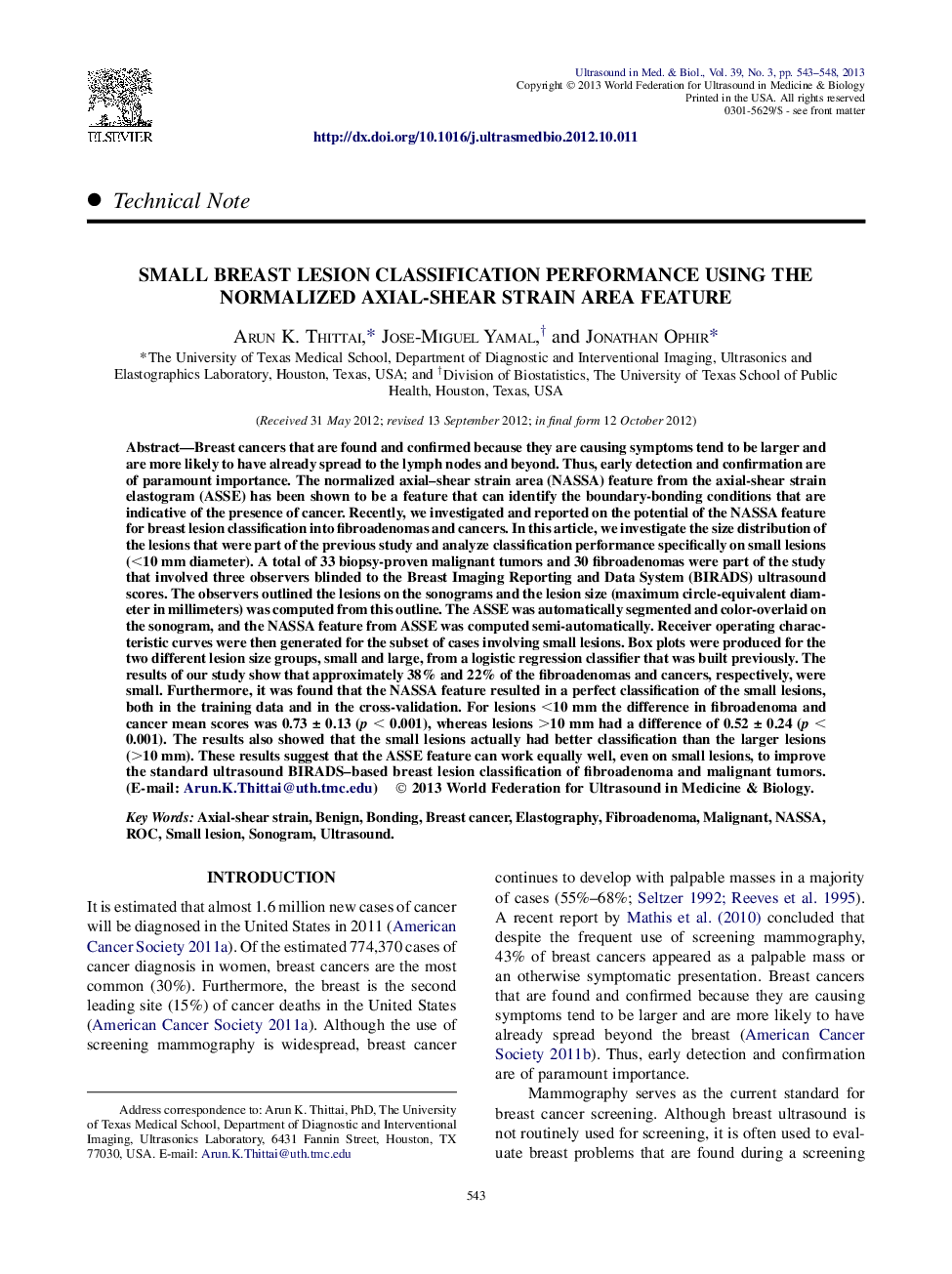| کد مقاله | کد نشریه | سال انتشار | مقاله انگلیسی | نسخه تمام متن |
|---|---|---|---|---|
| 1761290 | 1019640 | 2013 | 6 صفحه PDF | دانلود رایگان |
عنوان انگلیسی مقاله ISI
Small Breast Lesion Classification Performance Using the Normalized Axial-Shear Strain Area Feature
دانلود مقاله + سفارش ترجمه
دانلود مقاله ISI انگلیسی
رایگان برای ایرانیان
کلمات کلیدی
موضوعات مرتبط
مهندسی و علوم پایه
فیزیک و نجوم
آکوستیک و فرا صوت
پیش نمایش صفحه اول مقاله

چکیده انگلیسی
Breast cancers that are found and confirmed because they are causing symptoms tend to be larger and are more likely to have already spread to the lymph nodes and beyond. Thus, early detection and confirmation are of paramount importance. The normalized axial-shear strain area (NASSA) feature from the axial-shear strain elastogram (ASSE) has been shown to be a feature that can identify the boundary-bonding conditions that are indicative of the presence of cancer. Recently, we investigated and reported on the potential of the NASSA feature for breast lesion classification into fibroadenomas and cancers. In this article, we investigate the size distribution of the lesions that were part of the previous study and analyze classification performance specifically on small lesions (<10 mm diameter). A total of 33 biopsy-proven malignant tumors and 30 fibroadenomas were part of the study that involved three observers blinded to the Breast Imaging Reporting and Data System (BIRADS) ultrasound scores. The observers outlined the lesions on the sonograms and the lesion size (maximum circle-equivalent diameter in millimeters) was computed from this outline. The ASSE was automatically segmented and color-overlaid on the sonogram, and the NASSA feature from ASSE was computed semi-automatically. Receiver operating characteristic curves were then generated for the subset of cases involving small lesions. Box plots were produced for the two different lesion size groups, small and large, from a logistic regression classifier that was built previously. The results of our study show that approximately 38% and 22% of the fibroadenomas and cancers, respectively, were small. Furthermore, it was found that the NASSA feature resulted in a perfect classification of the small lesions, both in the training data and in the cross-validation. For lesions <10 mm the difference in fibroadenoma and cancer mean scores was 0.73 ± 0.13 (p < 0.001), whereas lesions >10 mm had a difference of 0.52 ± 0.24 (p < 0.001). The results also showed that the small lesions actually had better classification than the larger lesions (>10 mm). These results suggest that the ASSE feature can work equally well, even on small lesions, to improve the standard ultrasound BIRADS-based breast lesion classification of fibroadenoma and malignant tumors.
ناشر
Database: Elsevier - ScienceDirect (ساینس دایرکت)
Journal: Ultrasound in Medicine & Biology - Volume 39, Issue 3, March 2013, Pages 543-548
Journal: Ultrasound in Medicine & Biology - Volume 39, Issue 3, March 2013, Pages 543-548
نویسندگان
Arun K. Thittai, Jose-Miguel Yamal, Jonathan Ophir,